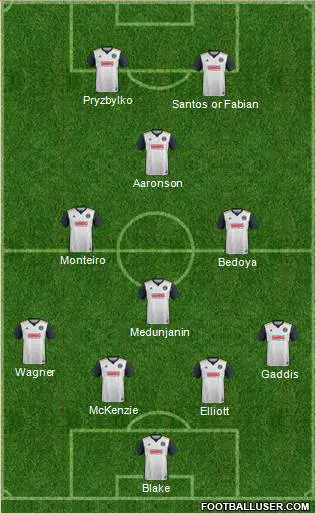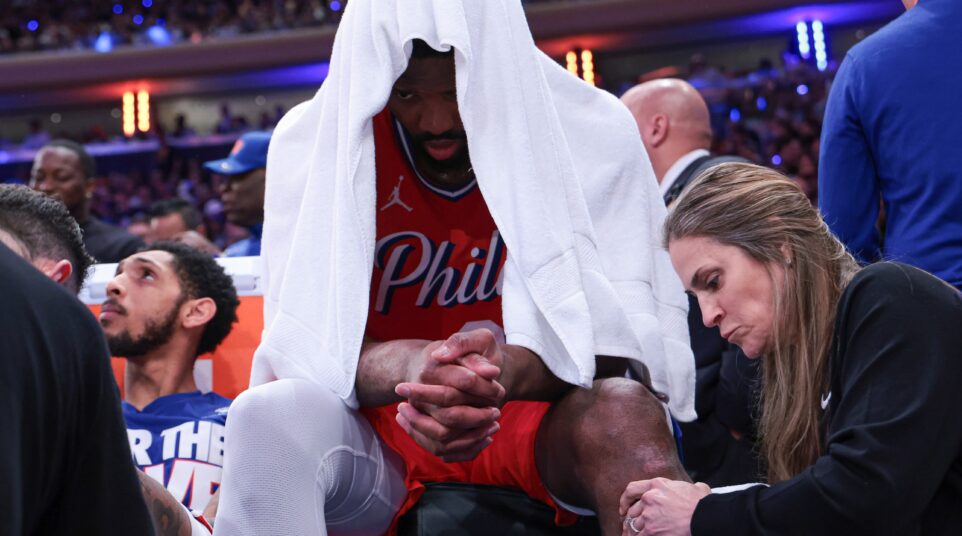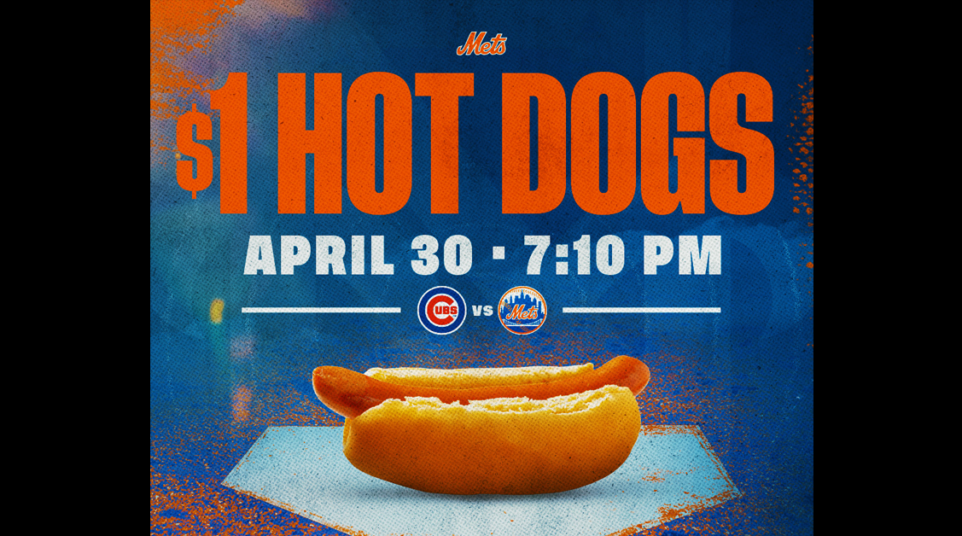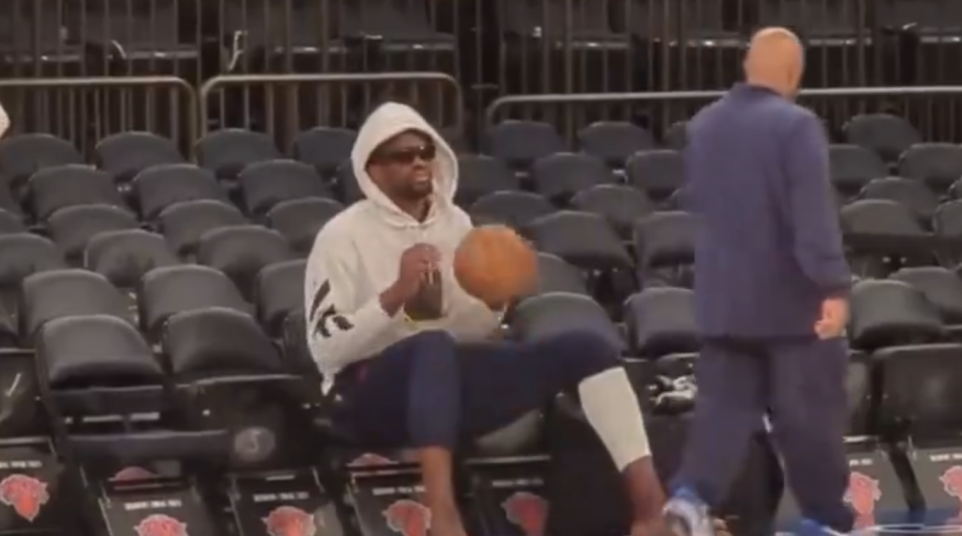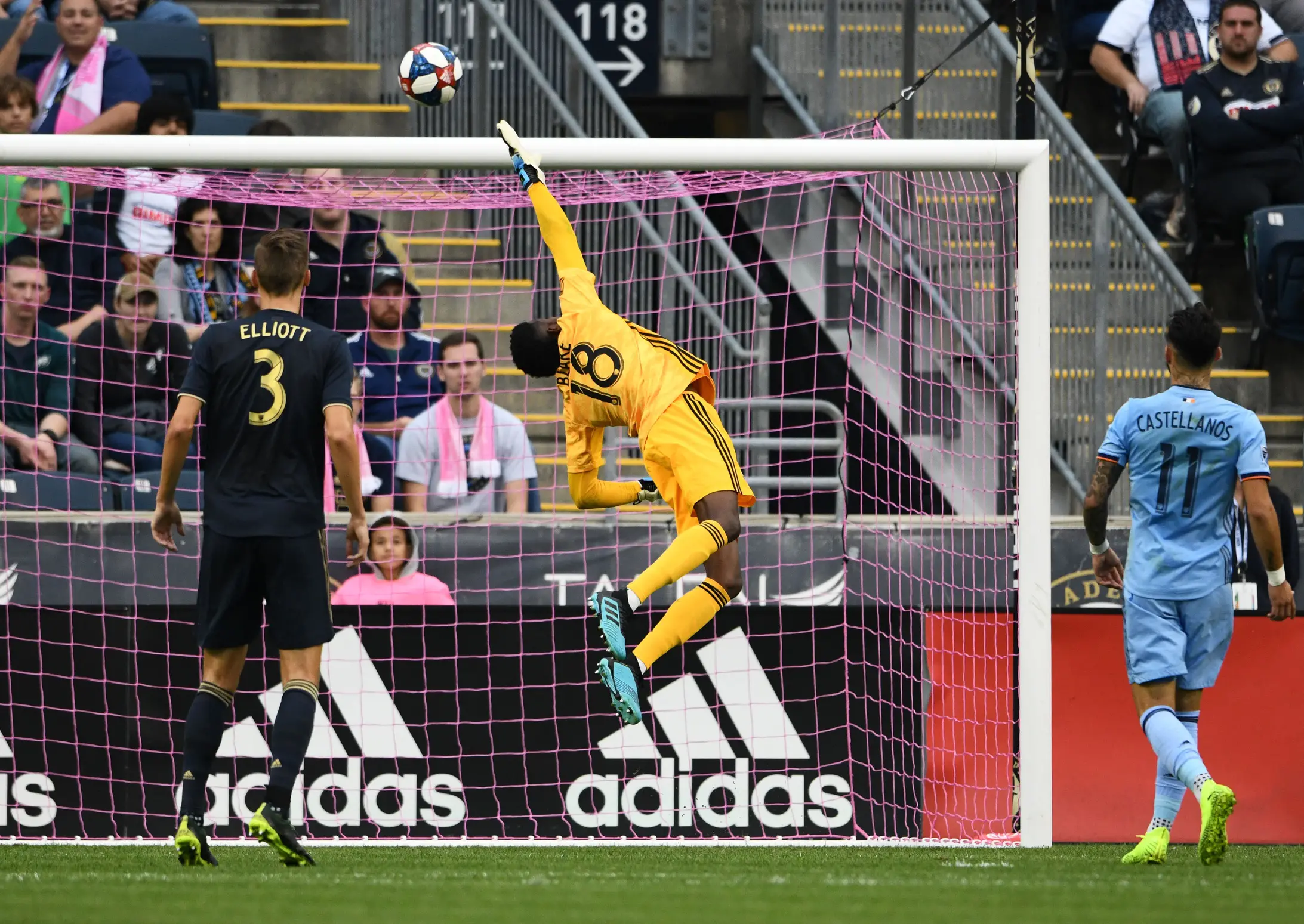
10 Thoughts on the Philadelphia Union's Best Season Ever, Which Ended on a Sour Note
It’s weird to sit here and think that the best Philadelphia Union regular season was still somewhat disappointing.
I don’t think that’s a “Negadelphia” take; I think it’s probably what most fans are feeling when you consider that this team lost three of four games down the stretch, played their way out of first place, and then blew an opportunity to host two playoff games. They also blew a chance at sneaking into the CONCACAF Champion’s League, which would have been a fantastic consolation prize for a record-setting, yet likely trophy-less season. This club just always seems to reach these significant tipping points before coming up short, which you saw over these past two weeks, in all four prior playoff losses, and in the three U.S. Open Cup final defeats.
However:
1. This is still a wildly successful season
16 wins is a franchise record.
55 points is a franchise record.
Beating Red Bull in a home playoff game would still make for an incredibly successful season. The Union have never won a playoff game EVER, so getting over that hump this year would be significant. They haven’t even hosted a playoff game since October of 2011, which was eight full years ago.
But I do think this squad left a lot on the table after sitting in first place for a significantly large chunk of the season. They had bad losses in Montreal, Salt Lake City, and Chicago. They dropped too many points during the three game home stand against Portland, Seattle, and Colorado. A stellar campaign still brought with it a lot of head-scratching results.
It’s strange to think that this team was only one win and five points better than last year’s squad. Watching both play, this Union roster felt like it was so much better than the Borek Dockal/Cory Burke/C.J. Sapong team, but only finished slightly ahead in terms of total points and wins. If you put both squads against each other, I think the 2019 Union wins rather comfortably.
2. My team sheet for the playoff game
It goes like this:
bench: Bendik, Ilsinho, Picault, Allen, Trusty, Creavalle, Wooten (or the other of Fabian/Santos if healthy)
I know Santos is coming off the injury, but if he’s 100% I just think he makes more sense as a complement to Pryzbylko. Andrew Wooten doesn’t really work because his skill set overlaps with Kacper while Picault is clearly better as a winger, so he sits.
If Santos can’t go, I’d honestly try Fabian up there. That way Brenden Aaronson can keep doing his two-way work from the tip of the diamond while you add a bit of creativity next to Kacper. It just makes more sense to me to rely on that four-man midfield to pin Red Bull back and keep the pressure on. That was your strength all season long, so use it in the playoffs.
3. The 4-2-3-1
In hindsight, Jim Curtin probably should have trusted the 4-4-2 diamond instead of falling back on the 4-2-3-1 towards the end of the season.
No, he didn’t have the preferred striker pair to play the 4-4-2 down the stretch, since Pryzbylko and Wooten have that redundant bit of play style, but this midfield was better suited to the diamond, which squeezed opponents in possession before Ilsinho would come on as a super sub. That’s when they were really dangerous, when they would switch to the 4-2-3-1 in the second half after playing 60-65 minutes of 4-4-2. They were successful at strangling opponents, wearing them down, and then coming at you hard from minute 70 or so until the final whistle.
4. Brenden Aaronson
He showed some really good things this year but he’s obviously not yet the player he needs to be.
Here’s a good example of the type of thing that held him back during his first MLS season:
These Aaronson sequences kill me, because he gets himself into very good "green zone" positions and then loose touches result in him being muscled off the ball by bigger defenders: pic.twitter.com/3e48tcFU9Y
— Kevin Kinkead (@Kevin_Kinkead) October 6, 2019
Part of the problem is that I don’t think Brenden’s feet operate at the speed of his brain, which is to say that he knows what he wants to do, and puts himself in great spots, but then can’t make that linking or key pass in the final third. Sometimes he can’t trap and turn in tight quarters.
When he can get his feet and his mind on the same page, and he can show that deftness between the opponent’s midfield and defensive lines, he’ll become a really nice player. He also could benefit from getting into the gym and adding 10 pounds this winter, because he’s just too easily knocked off the ball by bigger opponents and he’s not going to get those easy whistles from refs unless he turns into Zlatan Ibrahimovic overnight.
5. Marco Fabian
Somehow finished with the second most goals on this team, which is wild. Two however, were penalties, so you have to point that out (he also only converted 50% of his PK attempts).
I know he’s been somewhat underwhelming this year, but has he been worse than Aaronson? Has he been truly worse? No, definitely not.
The expectations for a $2 million dollar designated player are so much different than an 18-year old homegrown rookie, but when you look at what each guy did on the field, I really don’t think there was too much separating them from an offensive productivity standpoint. Fabian finished with five run of play goals and one assist while taking 65 shots in 1,249 minutes of play. Aaronson pressed better and did better defensive work, but only contributed three goals and two assists while firing off 34 shots in 1,722 minutes. Fabian’s injury issues and lack of chemistry with the rest of the midfield made Aaronson the better choice via “fit,” but the Mexican veteran contributed much more to the attack when he was out there.
It’s always trendy to play the homegrown kid since he came through the academy and blah blah blah. All you have to do is kick a ball in a straight line and everybody will be calling you the “next best thing,” since expectations are so incredibly low for young American players these days.
But the truth is that there were times this season where Marco Fabian needed to be on the field, and wasn’t, because Aaronson was in his spot.
6. Transitional defense
Did you find it ironic that the Columbus goal that essentially ended the Union’s 1st place bid came on a counterattack?
That was their weakness in 2018 and it was their weakness again in 2019, something that they did a better job of handling overall, but every once in a while sequences like this would pop up:
7. Telling the story with numbers
Regular season finishes followed by league-wide rank:
- 58 goals (5th)
- 14 shots per game (9th)
- 5.1 on-target shots per game (9th)
- 10.6 dribbles game (4th)
- 52.1% possession (7th)
- 42 assists (4th)
- 81.8% passing accuracy (9th)
- 356 key passes (8th)
- 15.6 aerials won per game (7th)
- 18.9 tackles per game (2nd)
- 11.6 shots allowed per game (6th best)
- 11.4 fouls per game (14th)
They were top ten in almost every significant category this season. Great stuff across the board.
And that key pass stat is interesting to me. The Union finished 20th this season with only 51 long key passes total, but finished 6th with 305 short key passes. Those are the numbers of a possession team that didn’t just play long and chunk the ball forward without necessity, but showed purpose with the ball instead.
8. October Rust
The Union are just not good at finishing seasons. They have not finished a season on a decent run of form since 2011, when they went eight games unbeaten before losing their season finale.
This season, they finished with three losses and a win, and here’s what happened in prior years:
2018:
- draw, win, loss, loss
2017:
- loss, win, loss, win
2016:
- draw, loss, loss, loss
So if you go back four seasons now and compile the last four games of each of those campaigns, the Union have four wins, 10 losses, and two draws. They struggle immensely at hitting the finish line with momentum, which saw them limp into the 2016 and 2018 playoffs in relatively poor form.
Type O Negative wrote a song about the late-season Philadelphia Union:
9. Andre Blake
Not his best year.
I don’t have stats to back it up, and goalkeeper stats are pointless anyway, but if you watched the games you knew his 2019 performances did not match the borderline elite precedent he established in previous years. His selection to the All-Star Team was a huge surprise for me.
10. Jay Sugarman
We’re gonna learn a lot about the owner this winter. He’s got a solid coach and an excellent sporting director. Attendance was up as fan interest returned. The practice and training facilities are top notch and the academy is cranking out talent.
So what does he do? Does he spend more money this offseason to push this franchise to the next level? Or does he continue to do it on the cheap, sitting on his growing investment while riding a Moneyball setup to overachievement?
Only time will tell, but you can’t use wariness as an excuse moving forward, since the Union went above and beyond in expectations this year while still finding themselves as a middle-tier team when it comes to overall spending, mostly due to their strategy of not going after high-priced Designated Players or paying significant amounts for transfer fees.
Everybody else did their part this year, now we’ll see how badly Jay Sugarman wants to win.


